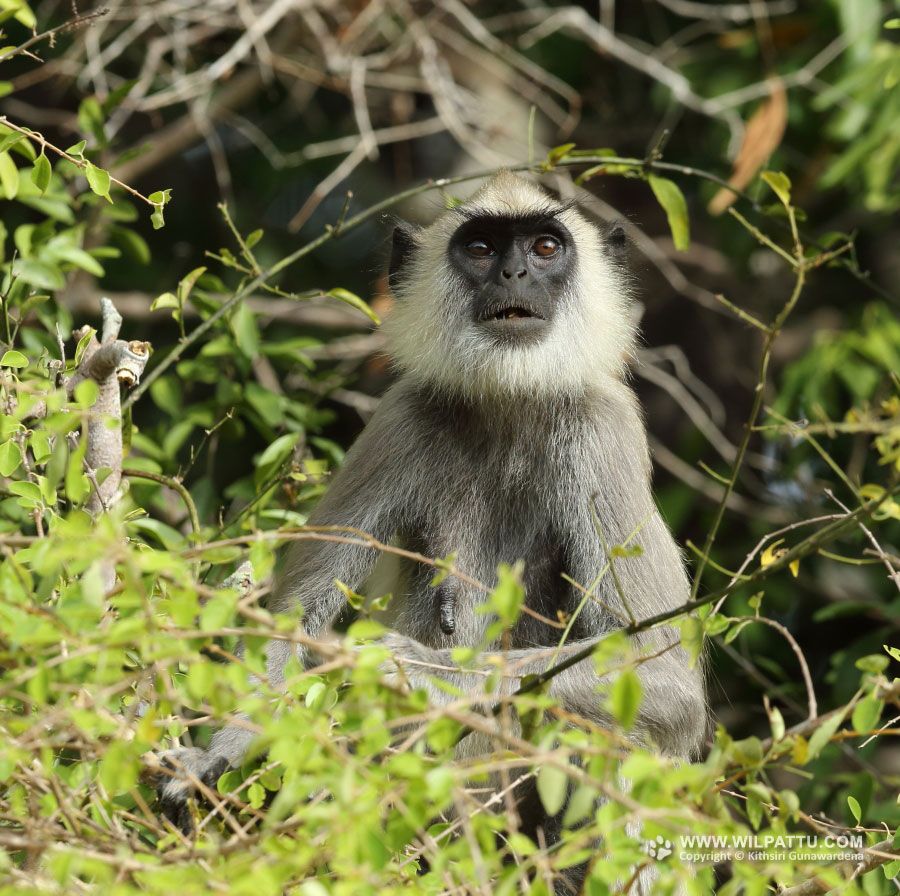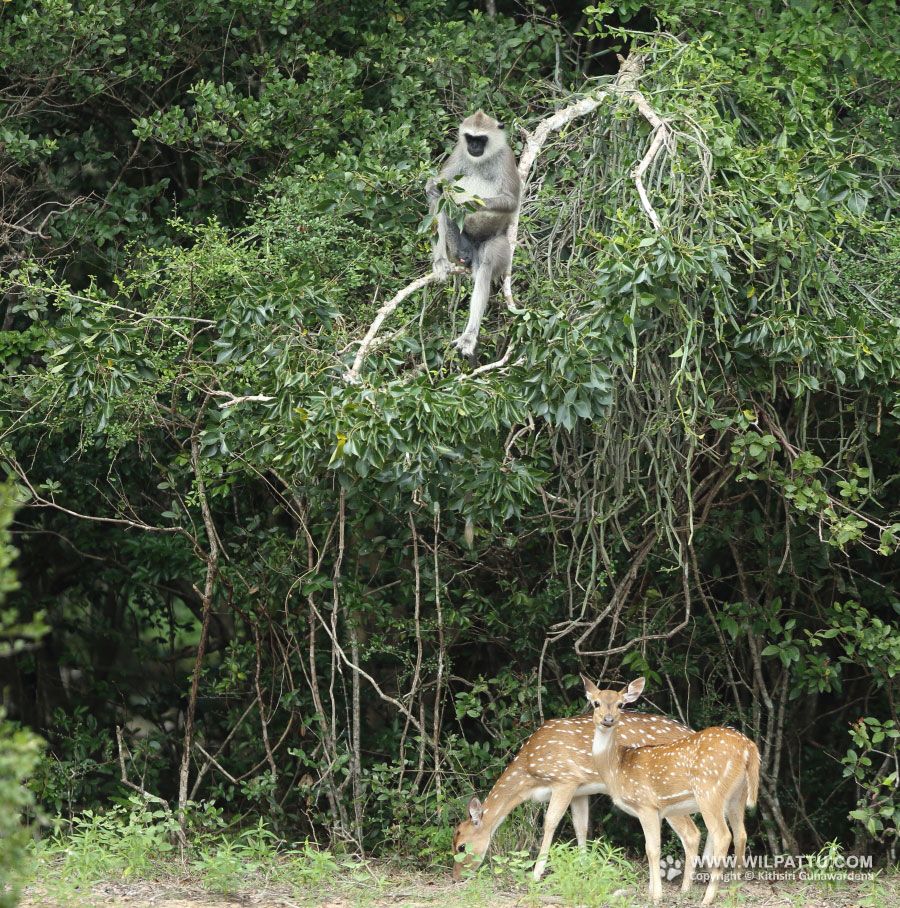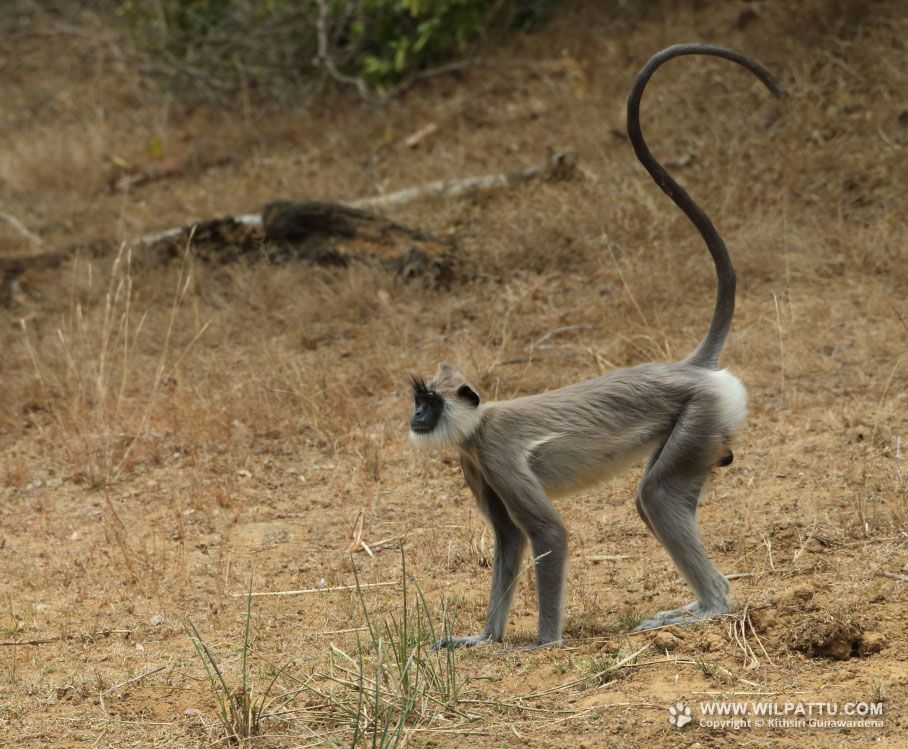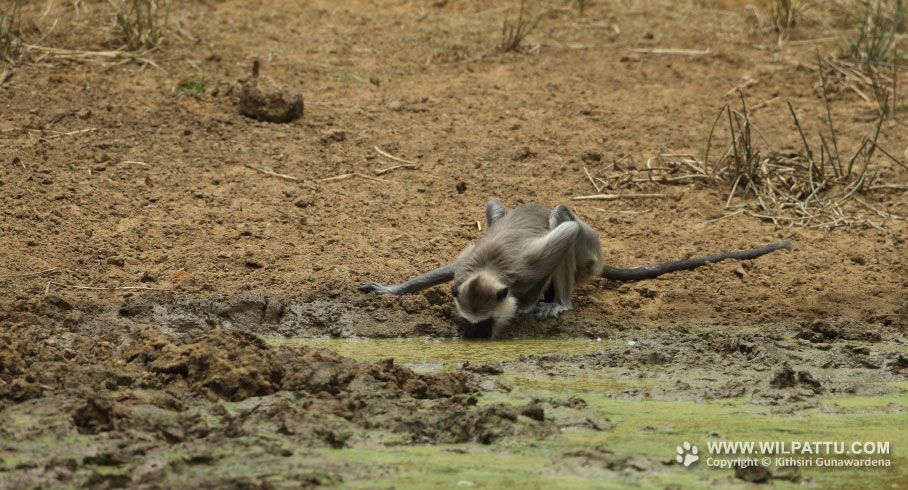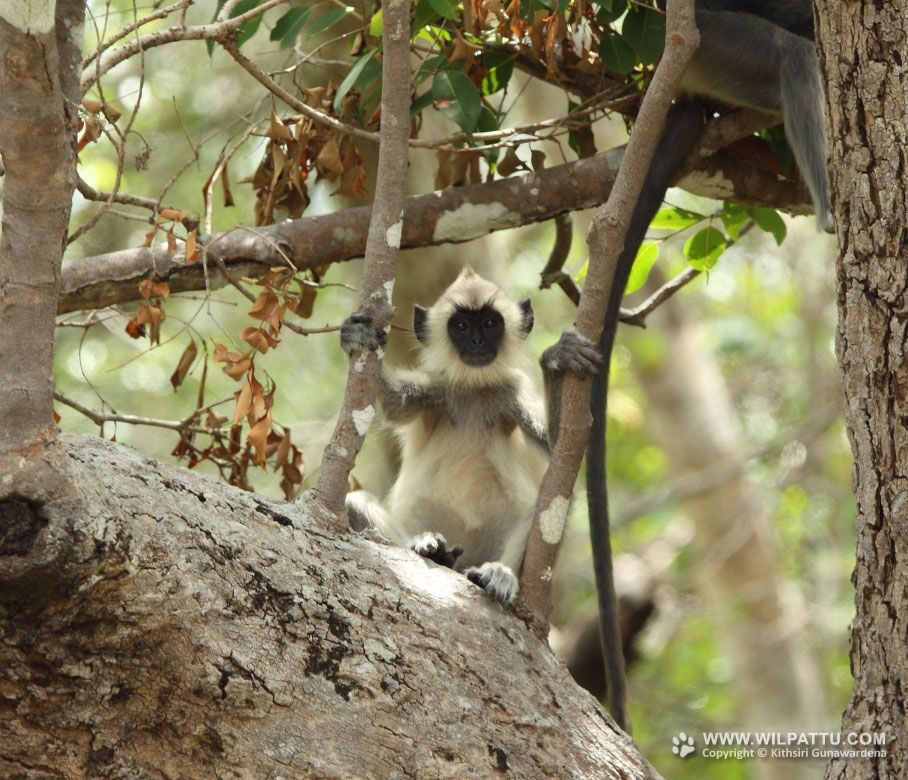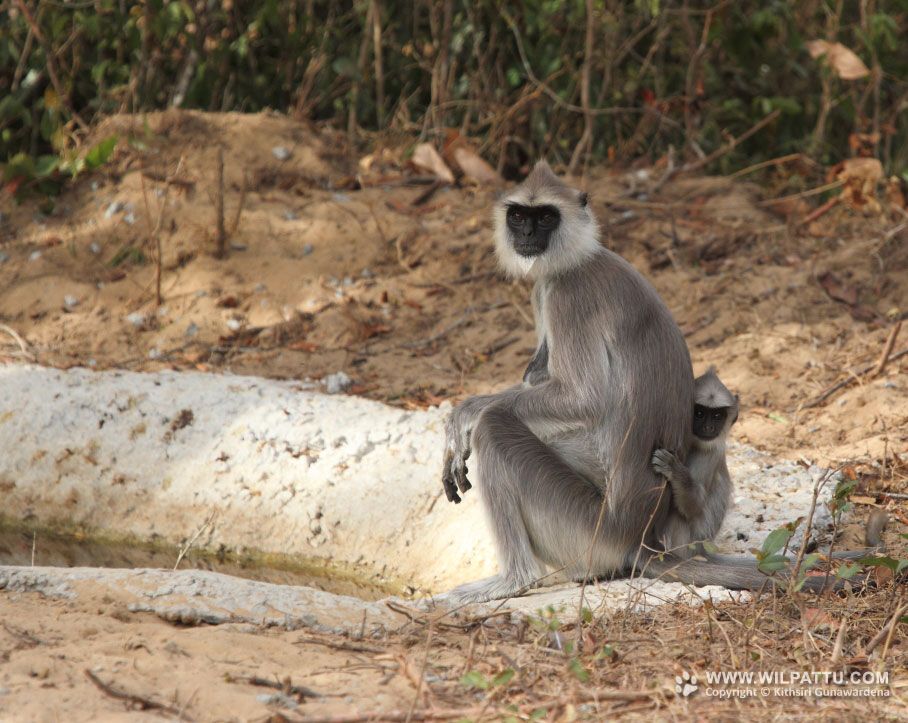
Mammals ‹‹ Go Back
This species is found in South-East India and Sri Lanka. Three subspecies have been recognized
- S.p.priam South and South-East India (Andra Pradesh, Karnataka, Kerala, and Tamil Nadu)
- S.p.anchises South-Central India (South of Deccan Plateau). This subspecies is found in Kurnool, Andra Pradesh and in Pavagada in the district of Tumkur, Karnataka.
- S.p.thersites throughout the Dry Zone of Sri Lanka.
The last subspecies is endemic to Sri Lanka.
The conservation status of this species in the country is regarded as Least Concerned (National Red List 2012).
This is a common species found in forests and well-wooded gardens in the dry zone areas. They are a common sight in most localities of archaeological importance in the South as well as the North-Central parts of the dry zone. The highest altitude at which I have seen this species is 900 meters at Gongala at the Hayes Estate. In the North I have observed small troops in the Manalkadu area in the Jaffna Peninsula. They are common in all the dry zone national parks. I have also seen them at Randenigala and Haragama at an altitude of 584 meters. In the South they are common up to around Tangalle.
I have often seen these deer moving through the jungle following troops of Grey Langurs. This is a symbiotic relationship that benefits both species. While the troop feeds, the monkeys will always have one member that will act as a look out’ that will constantly watch out for predators from above and will give out immediate alarm calls at the first sign of a predator. The ever-vigilant deer will make its alarm calls if any danger is detected from the ground. Thus the association results in both species achieving a greater level of security, as leopards and pythons hunt them both. The deer, while enjoying greater protection, have a further benefit of being able to relish the tender shoots and fruits constantly dropped by the monkeys as they feed.
In Wilpattu this is a common species that can be observed during most field trips. The alarm calls of this monkeys made when they spot a leopard (Kak Kakoo Kak) brings delight to those who look for the elusive leopards in Wilpattu. Despite some studies revealing that these monkeys hardy visit water bodies to drink, I have, on many occasions observed them visiting water bodies during the dry season in Wilpattu.

